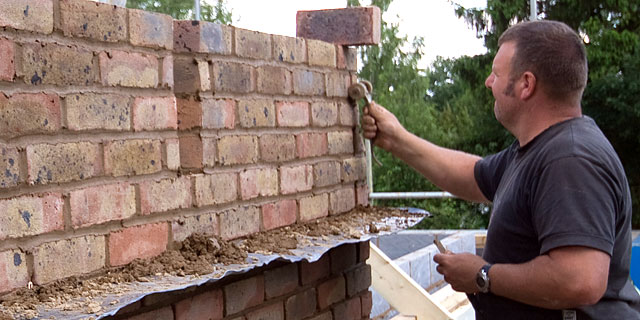British construction must recruit over 400,000 people each and every year between now and 2021 – equivalent to one worker every 77 seconds – if it is to create the homes and infrastructure the nation needs, according to the latest report from Arcadis.
Failure to address the skills gulf could even see the earnings of some tradespeople sky-rocketing inside a generation, leading to the rise of the MINTED workforce – the Most in Need Trades Earning Double.
Failure to address the skills gulf could even see the earnings of some tradespeople sky-rocketing inside a generation, leading to the rise of the MINTED workforce – the Most in Need Trades Earning Double.
The Arcadis Talent Scale has been developed to measure the true extent of the skills crisis across the infrastructure and house building workforce. In house building alone, the study shows that if the UK is to increase output to 270,000 new homes over the next five years, it will need to employ in excess of 370,000 new people. Meanwhile, when it comes to meeting forecast national infrastructure requirements, an additional 36,500 people will need to be employed every year.
When it comes to individual skills, the greatest need is for carpenters and joiners, where demand accounts for nearly one sixth of all national resource requirements. Plumbers, Electricians, and Bricklayers are also in high demand
When it comes to individual skills, the greatest need is for carpenters and joiners, where demand accounts for nearly one sixth of all national resource requirements. Plumbers, Electricians, and Bricklayers are also in high demand, particularly in the labour-intensive housebuilding sector. Meanwhile, the report identifies a need for over 7,400 Civil Engineers and 7,300 Quantity Surveyors.
London and the South East will need to employ more people than any other part of the UK, accounting for nearly 30 percent of total demand (110,000 people). With major national infrastructure programmes such as HS2 and Crossrail 2 already in the pipeline, it is expected that companies will need to draw heavily on the common talent pool of transferable skills if delivery targets are to be achieved.
Outside of London and the South East, the highest skills requirement is in the East of England and the South West, where more than 43,000 and 41,000 additional workers respectively are needed to meet projected regional housing and infrastructure requirements. At the bottom of the table is Northern Ireland, where employment demand accounts for just 3 percent of the national total.
These figures are independent of the impact of any eventual Brexit deal, which is likely to further increase the strain. In the event of a ‘hard’ Brexit scenario – for instance, extending the points-based system currently in place for non-EU migrants – the number of EU construction workers entering the UK could fall at the rate of attrition. If this were to play out, 215,000 fewer people from the EU would enter the infrastructure and house building sectors between now and 2020, further exacerbating the existing labour shortage.
James Bryce, Arcadis Director of Workforce Planning, explained: “What we have is not a skills gap; it is a skills gulf. Systemic underinvestment in the nation’s workforce has contributed to a reduction in UK productivity. Construction employment is already down 15 percent on 2008 and, quite simply, if we don’t have the right people to build the homes and infrastructure we need, the UK is going to struggle to maintain it’s competitive position in the global economy.
if we don’t have the right people to build the homes and infrastructure we need, the UK is going to struggle to maintain it’s competitive position in the global economy
“However, overcoming a skills shortfall as vast as the one we now face can’t be achieved through education and technology alone. Of course, we need to bring more new talent into the industry but, in the short term, construction will also need to look at those currently working in other industries and dramatically improve its efficiency.
“On top of this, as part of any Brexit deal, the government can help by looking to secure the rights of EU workers currently operating in British construction, simplifying the visa system and minimising the tax burden on workers and business.
“If this fails to happen, many of the projects that the British government have earmarked for economic stimulus could prove more difficult and costly to resource. In the worst case scenario these projects could fail to be delivered at all, reducing our ability to grow the economy and limiting investment in the industry.”





